She wasn’t the only person to mention Renaissance. It is the newest hospital in the area. It is physician-owned. And it has a reputation (which it disclaims) for aggressively recruiting high-volume physicians to become investors and send patients there. Physicians who do so receive not only their fee for whatever service they provide but also a percentage of the hospital’s profits from the tests, surgery, or other care patients are given. (In 2007, its profits totalled thirty-four million dollars.)
25 July 2020
Notes from a pandemic: Holy Hanna, it’s bad
21 July 2020
Facebook is a superspreader of COVID-19 misinformation
20 July 2020
Notes from a pandemic: Local hospital blasted for poor conditions
TW: Patients in abhorrent conditions. Patients placed in cramped rooms without adequate ventilation or air conditioning and full of medical equipment. Oxygen in the facility stopped working on July 5th, staff has been forced to using portable tanks for patients.

For reference these tanka last 45 minutes when run at 100% FiO2 and they only had 3 people to change them out for 90 patients.
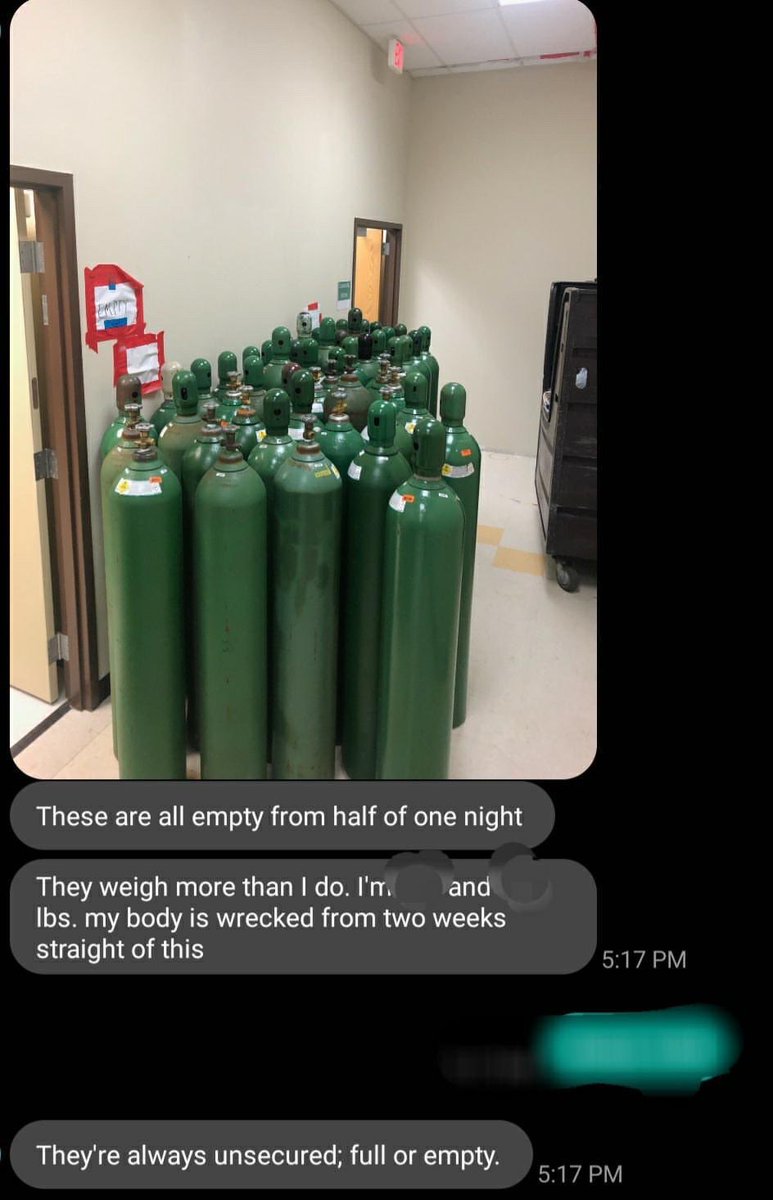
Trigger Warning⚠️ Blood/Medical Equipment/Critically ill patient.
The black dots on the patients back and on the bed are live ants crawling all over them. This is unacceptable.

This is absolutely horrific.

Doctor’s Hospital Renaissance converted a hospice facility into a covid unit. The thread above exposes the abhorrent conditions that was not covered in this article. (texastribune.org/2020/07/02/tex…) The nurses and respiratory therapists are being threatened into silence. The hospice facility was converted into a COVID unit so that DHR would stay “clean”
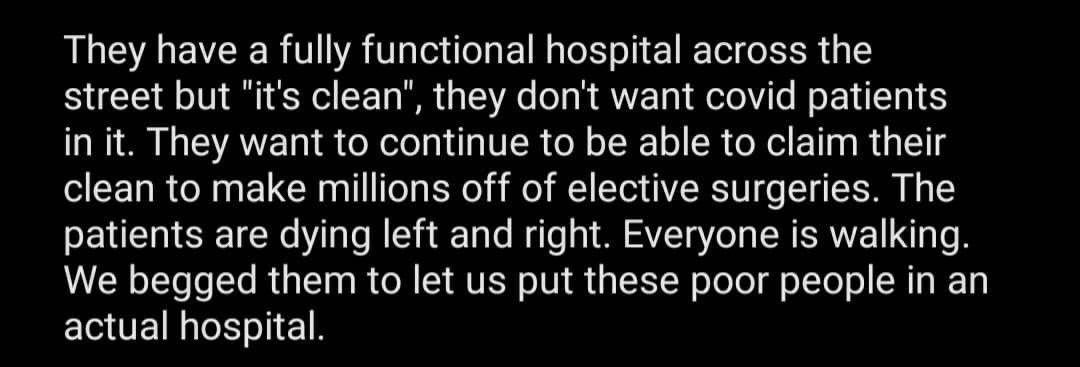
I do not work at this facility. I am assisting in blowing the whistle on the conditions of this facility. Those who work at this facility have been threatened into silence. To clarify this is who “Krucial” is, a staffing agency that has been staffing surge cities.
”Race-Based disparities in health outcomes are not abstract” Texas is failing their Latinx community covered DHR in an article today and here they talk about what my contact told me, the main hospital has been “kept largely free of the coronavirus to treat patients unrelated to the pandemic....as well as some elected procedures”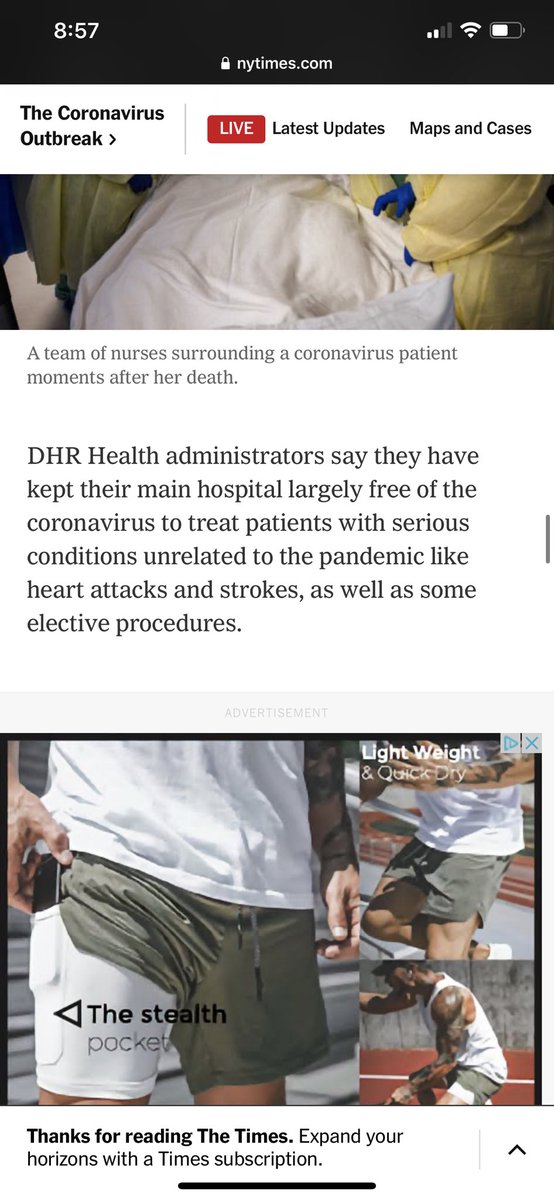
From a Nurse at DHR in McAllen, Texas.
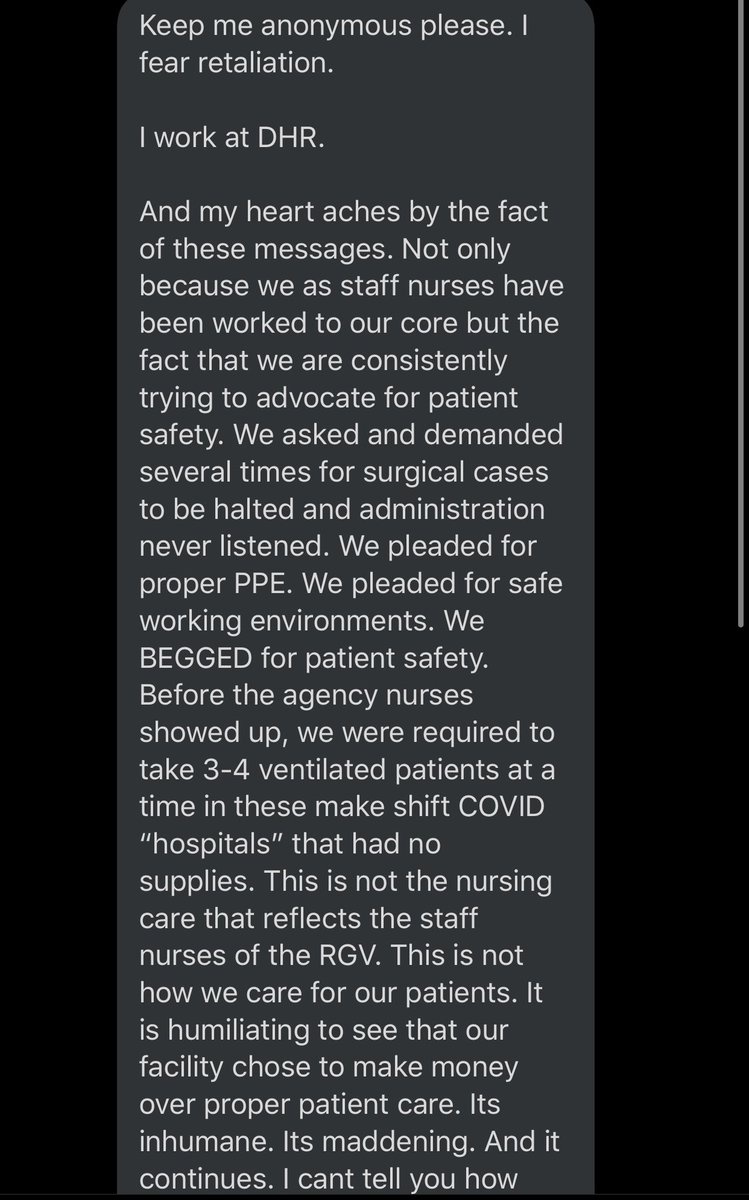
More nurses confirming this story.
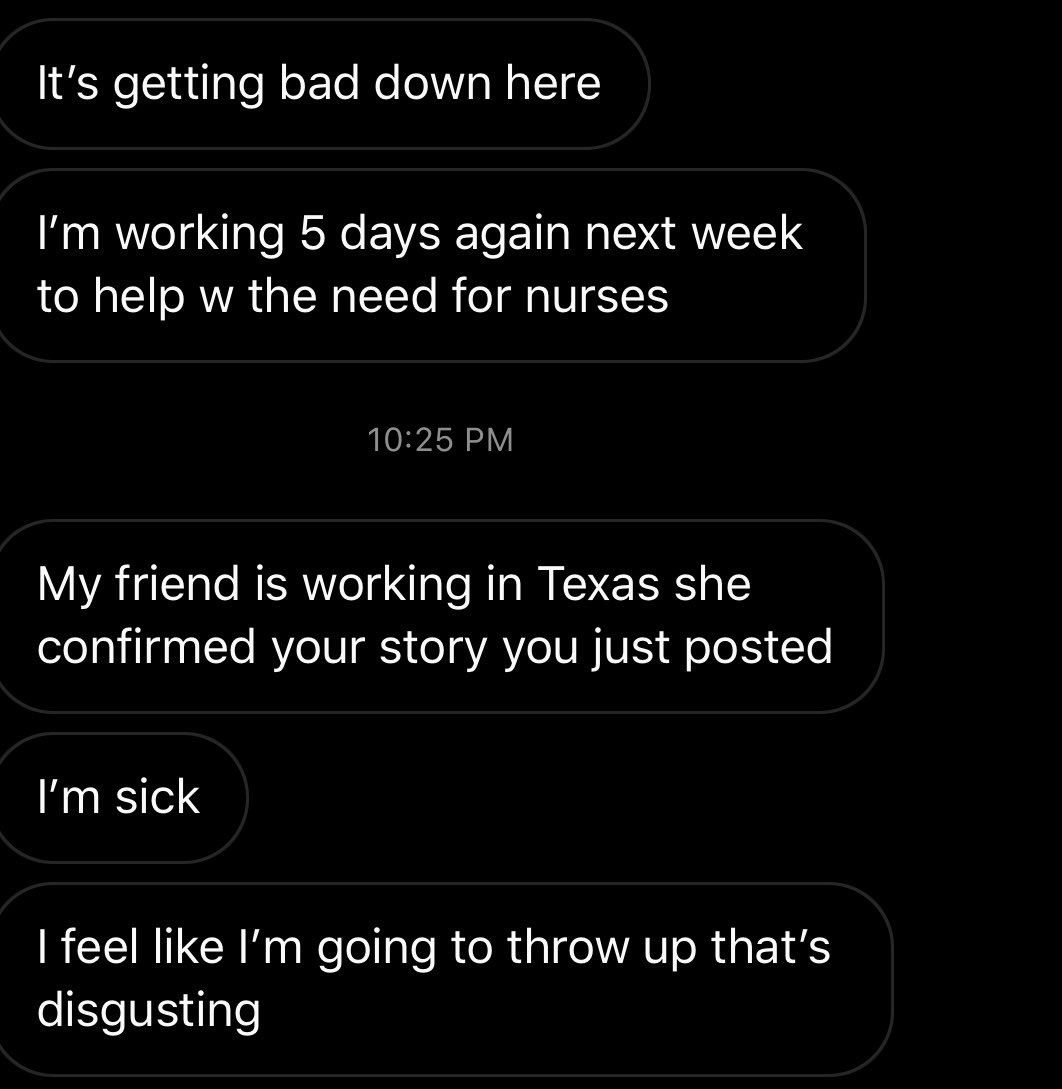
Covid is not profitable. Cutting corners in order to allow for continued elective procedures is profitable.
A newly hired nurse who was basically fired for testing positive for covid because she couldn’t use her PTO as sick leave.
“Rubrics are good” and other things some professors do not believe
13 July 2020
Who am I citing?
Using data from five top neuroscience journals, we find that reference lists tend to include more papers with men as first and last author than would be expected if gender were unrelated to referencing. Importantly, we show that this imbalance is driven largely by the citation practices of men and is increasing over time as the field diversifies.
1. You cannot “identify” or “verify” gender on behalf of someone else; you can only guess.2. Guessing gender is often inaccurate, offensive, and exceptionally harmful.3. You don’t actually need to know peoples’ genders for most use cases; and if you really must know, just ask.
Jordan D. Dworkin JD, Linn KA, Teich EG, Zurn P, Shinohara RT, Bassett DS. 2020. The extent and drivers of gender imbalance in neuroscience reference lists. Nature Neuroscience: in press. https://doi.org/10.1038/s41593-020-0658-y
08 July 2020
Update on the Better Posters book
- Cover (right).
- Release date (25 January 2021).
- ISBN number (9781784272357, accept no substitutes).
- A publisher’s webpage! I created an easy-to-remember URL for it: https://bit.ly/BetterPostersBook.
07 July 2020
Notes from a pandemic: You go into lockdown with the data you have, not the data you want
06 July 2020
The long reach of old media: Fox News and COVID-19
Three serious research efforts have put numerical weight — yes, data-driven evidence — behind what many suspected all along: Americans who relied on Fox News, or similar right-wing sources, were duped as the coronavirus began its deadly spread.
Dangerously duped. ...
Those who relied on Fox or, say, radio personality Rush Limbaugh, came to believe that vitamin C was a possible remedy, that the Chinese government created the virus in a lab, and that government health agencies were exaggerating the dangers in the hopes of damaging Trump politically, a survey showed.
04 July 2020
Letter about a statue
I was pleased that you addressed issues of racism in your email of 2 June. I wanted to bring up an related item for your consideration: the statue of José de Escandón on Edinburg campus. The statue describes Escandón as a “colonizer.” I suggest you consider whether a statue of a “colonizer” is in line with UTRGV’s values.
In particular, Escandón’s professional climb that led to his mandate to colonize the region was in part based on his success in quelling uprisings of Native Americans and “pacifying” them. That alone is problematic, particularly for our Native American students (5-11 students over the last four years). but also consider the larger role of colonialism in perpetrating slavery and genocide.
01 July 2020
Canada Day 2020
30 June 2020
Tuesday Crustie: Servant of Hera and friend of the hydra
Based on your field study what type of mythical beast or folk-creature would you be an expert in?
29 June 2020
What’s a nice zoologist like you doing in a plant conference like this?
 I’ll be speaking at the Plant Biology 2020 meeting next month as part of the workshop, “Get your message across: a guide to artwork and illustrations for better impact and clarity.”
I’ll be speaking at the Plant Biology 2020 meeting next month as part of the workshop, “Get your message across: a guide to artwork and illustrations for better impact and clarity.”19 June 2020
Why people don’t believe in science and the importance of criticism
One of the problems we face in the United States is that unfortunately, there is a combination of an anti-science bias that people are—for reasons that sometimes are, you know, inconceivable and not understandable—they just don’t believe science.
15 June 2020
Failure slays first author while co-authors skate by
13 June 2020
Picture a Scientist mini-review
09 June 2020
Tuesday Crustie: Looks big
08 June 2020
Career arcs: Stay alive!
Note: There are Black Lives Matter protests. There is a pandemic. Fascism is on the rise. I don’t know how to address this in the blog right now, except to say: I want Black people not live in fear of police. As an academic, I want more Black colleagues in my profession and Black students to get higher education. I want equality and not racist policies and racist actions. I want people to wear masks and stay home so they don’t prolong the pandemic. And I want people to not put up nazis and secret police.
With that preface, please forgive a post about career paths. It isn’t the most important thing out there now. But it’s something I’ve been working on for a while.
A while ago, I stumbled across a Big Country album that had been released a few years ago. I stopped following Big Country because their lead singer, Stuart Adamson, died. I didn’t think there would ever be another album.I dug in, and found the person singing lead vocals was Mike Peters, who led another band I followed around the same time: The Alarm. Again, I had kind of stopped looking for new music from The Alarm, because Peters had quit the band – live, on stage, with cameras rolling – without telling anyone else in the band he was about to do so.
And that was pretty much that for that version of The Alarm.
It was a big inflection point for Peters’s career. He talked about it for VH1’s Bands Reunited in 2004 (about 22 minutes in on this video):
I was committing commercial and career suicide. I was leaving what I was. I was Mike Peters of The Alarm. I still am. But the only way I could find my sanity and find myself again was to actually walk away from it.
I get the sense the Peters made peace with that decision, but that he still has a lingering sense of, “What it?” Could The Alarm have been one of those big worldwide bands, like their contemporaries, U2? But maybe I’m reading too much into it.
I went looking for how Peters came to be singing for Big Country. I’ve been thinking a lot about it ever since.
Big Country’s music was inspirational for Peters when he was first in The Alarm. The video also talks about the stuff I didn’t know:
The long road back for Peters after quitting on stage, with a new iteration of The Alarm.
An epic hoax to show the ageism of the music industry.
Multiple fights with cancer.
A lot of new Alarm music that I still have to catch up on.
And being asked to front Big Country, and getting to sing the song that had changed his life years ago, “In a Big Country.”
A little after watching that video, I listened to this WorkLife podcast about career decline. The first guest, Arthur Brooks, has advice: “Walk off the stage before you fall off it.” Brooks is not optimistic that people can stay productive in careers, and suggests lots of people should turn to things like teaching instead.
Both of these, of course, made me think about where I go from here in my career.
I had spent most of the past couple of years writing a book. That meant I wasn’t gathering new data, I wasn’t working with students. After I submitted the manuscript last fall, the COVID-19 pandemic scrapped any possibility of getting back in the lab and cranking out new data any time soon.
Is this one of those inflection points that I can’t recover from? Is this that combination of personal decisions (like Peters walking away from the band) and external factors (like pop music’s embrace of hip hop and move away from The Alarm’s rock and roll) that is going to sink me for good this time?
Peters’s career does give me some hope. The Alarm has made more albums in the twenty-first century than they did in the twentieth century (back in the 80s and early 90s). He still clearly loves performing. He gives back through charity work for blood cancer, through Love Hope Strength. Next year, The Alarm will celebrate 40 years, which is an achievement to be proud of and that few artists in music reach.
And the second part of the WorkLife also talked about people who do some of the best work in their later years.
I don’t want to quit being a researcher. I don’t want to stop being a scholar. I reinvent myself as a scientist before. I hope I can do it again. As Big Country sang, “Stay alive!”
External links
31 May 2020
Saddest day ever
29 May 2020
Every empire falls
When you’re a kid and you study history, you read about all these empires of the past that rose and fell. Rome. Genghis Khan and Alexander the Great. The Holy Roman Empire, the Ottoman Empire, the British Empire. (Yes, my history was very western oriented.)
And sometimes you wonder what it must be like to be in the tail end of that, when an empire is breaking apart. “What must it be like,” you think, “to live through that?”
Well, now I know.
Living through history sucks.
Top picture from here. Bottom picture by Associated Press photographer Julio Cortez. Bruce Janu writes: “The upside-down flag has historically been used to signal ‘distress.’ And ‘distress’ may not be a word that is strong enough.”.
When manuscript formatting is a deal breaker
Do not insert references using software such as EndNote, which adds a layer of embedded coding to the manuscript; use only MS Word’s built-in endnote function to insert references.
22 May 2020
Notes from a pandemic: Coming back out
Me? I was good. It’s being the prospect of coming out of isolation that is stressing me out. It’s not because I’ll have to be around people again. It’s that I am not at all convinced it’s being done safely.
As I mentioned, the University of Texas system has already decided all its campuses will have face-to-face instruction for fall.
Earlier this week, my institution had a video chat with the person in charge of “reopening” the university, and I learned that food services, the gym, and the libraries were going to open back up at the start of June.
I asked, “Given the increase in cases that other countries and states have seen after "reopening", as a medical professional, are you comfortable with reopening the campus? Is this a medically advisable course of action?”
I didn’t get an answer to that.
I did get an answer to “If it was not possible for people to be on campus safely through March-May, why is it possible now? What has changed from a public health perspective?” The answer was basically, “We know more now.” Personally, I’d be happier if that answer was, “We have a vaccine now,” but of course, we don’t, and won’t have anytime soon.
I personally will be teaching online in fall, so I am not so much worried for my own health as the safety of my colleagues and students.
My worries got even worse when I saw news last night about the University of Texas’s flagship campus at Austin. Despite having an almost empty campus, they’ve had eleven of their janitorial staff test positive for COVID-19.
(University spokesperson J.B.) Bird said that UT officials did not know exactly how the virus spread among its custodial staff members, but said they had been practicing social distancing and wearing masks.
I just don’t see anything that convinces me that universities – including mine – can realistically expect to keep people safe.
External links
Q&A with Dr. John Krouse, Dean of the UTRGV School of Medicine (Recorded from Facebook livestream)
Virus outbreak hits nearly empty University of Texas campus: What will happen this fall?
20 May 2020
Some people will literally die rather than change their minds
I have been thinking a lot about the craziness of “re-opening” and how some people refuse to take any precautions. Just a day or two ago, I was imagining asking these people, “What would it take to get you to change your mind, short of you getting hooked up to a ventilator because of COVID-19?”
Then today I saw this. Physician Ryan Morino tweeted (lightly edited):
I’ve been called a lot of names and accused of a lot of things by emergency patients but it’s surreal to have a patient accuse me of falsifying their COVID result – because they don’t believe the virus is real – as I’m actively trying to keep them from dying from multi-organ failure from COVID.
My “short of you getting COVID-19” qualifier turned out to be an unreasonable assumption. I thought that the personal first-hand experience of getting so sick that you are hospitalized would be something would force people to reconsider their views. How wrong I was.
(Aside: Hospitalization is bad, but this description of being on a ventilator proved to me that I had not idea how bad things could while trying to keep you alive from COVID-19.)
From my experiences trying to talk about evolutionary biology, I know lots of people are intransigent. They not going to change their minds in front of you. People have values and beliefs and community ties that matter to them more than evidence. For a long time, I’d been okay with that.
But these sorts of reactions to the COVID-19 pandemic have shaken me. I’ve never felt so depressed and pessimistic about the prospects for science communication. This is the fight of our lives, and we’re losing.
Another piece that hit me hard was this article by Adrienne LaFrance about conspiracy beliefs, and how one in particular has gained so much traction over the space of three years. For someone like me who had never heard of this much before, the conspiracy stories (I refuse to call them “theories”) are unbelievable. They are inconsistent, and they have consistently failed to say anything meaningful. Edited excerpt:
I asked for examples of predictions that had come true. They could not provide specifics and instead encouraged me to do the research myself. When I asked them how they explained the events (that had been) predicted that never happened(,) they said that deception is part of (the) plan.
It brought to mind this from Jessica Price (emphasis added):
I guess it’s time to repeat the main thing I learned from reading a fuckton of Holocaust memoirs again: propaganda does not need to be persuasive, only pervasive. Its secondary purpose is to convince. Its primary purpose is to exhaust.
LaFrance arrives at a point that I had independently been thinking about before I read her article. People often talk about the “politicization” of events in the US now, such as the COVID-19 pandemic.
This moment in American history is better understood as being driven by a new religious movement rather than existing political movements.
I don’t mean “religion” in the usual sense of the major Abrahamic faiths (Christianity, Judaism, Islam) – although those are often intertwined with the new zeitgeist.
Like LaFrance, I mean that people are describing and responding to events in ways that you normally see in religious communities rather than political parties. Such as the unshakable beliefs in things unseen (“COVID-19 isn’t real,” says the one about to die from organ failure from it), belief in prophecies, communities springing up around practices not held by everyone.
And certainly, some political leaders act more like old school gods than traditional politician. They demand tribute, sacrifice, and threaten those who oppose them. A thunderbolt or two aimed at demigods who aren’t “respectful” or grateful enough. They sure aren’t above lying (you know, turning into a swan to get laid).
And they sure as hell don’t care about puny mortals. “So a few humans die. So what?”
It’s a radically different vision than one I have for politics, which is more about negotiation and compromise and trying to make most people’s live better. But probably my view was skewed from living most of my life in a relatively peaceful few decades, and mistaking that as normal.
From my point of view as a scientist who wants to do science communication, I think that treating opposition to COVID19 information as being based in religious opposition (in a secular, non-tradition sense) rather than political opposition changes the dynamic and changes the approach that you take.
It makes it clear that the task ahead of us is far, far harder than we ever could have expected.
Ultimately, I have to believe that at some point, reality will sink in. I hope that many people who aren’t wearing masks today, for instance, will one day look back at their actions and think, “Maybe I should have worn that mask.”
I hoped that we might have gotten to that point by now.
Additional: Just after I posted this, Andrew Thaler wrote:
The mistake we're making is thinking we have a science communication problem when what we have is a terror management problem.
Not sure I agree, but I think we both agree that “science communication” is not what the moment calls for. Science communication is a default mode. We need a crisis mode, and we don’t have one.
More additional: Emily G also has a thread that makes a similar point:
Here’s the thing no one wants to hear: you fight propaganda with propaganda. Unless SciComm can fundamentally scale to address the propaganda machine in sum and substance – and it can’t – then it’s doomed to ineffectiveness.
Even more additional: And just to show that some elements of this problem are widespread and not just an American thing, a new report shows a lot of Canadians have false beliefs about some aspect of COVID-19.
More than a quarter think the virus was made in a Chinese lab.
Almost a quarter thought there were drugs that could treat the disease, notably hydroxychloroquine.
More than one in ten think the virus is a cover-up for 5G wireless.
And just to top it off, there’s a lot of overconfidence to go with the misinformation.
Sarah Everts, a Carleton journalism professor and co-researcher in the study, said she was “floored by the overconfidence Canadians have in their own ability to distinguish conspiracy theories and misinformation.”
For example, 58 per cent of respondents who believe the 5G conspiracy theory also said they could “easily distinguish” between COVID-19 facts and misinformation.
External links
The prophecies of Q
The hard truth about ventilators
Nearly half of Canadians can’t tell coronavirus fact from conspiracy theory: survey
08 May 2020
Cameo in article about scientific illustration
That’s it. That’s the post. Back to grading for me.
External links
The software that powers scientific illustration
04 May 2020
Notes from a pandemic: Not good
Then I realized that I screwed up in my online classes. I made a mistake when I changed courses to accommodate for extended spring break back in March, put it in the syllabus then, but nobody caught it (including me) until Saturday. Like, right before it mattered.
The mistake shouldn’t be too bad for two courses (except for me own grading load), but is... not what I would have done in the third. Students are grumpy with me, rightfully so, and I’m not happy with myself, either, so that fits.
Then Texas has decided to start to “re-open” and I saw images like this at my field site on the beaches of South Padre Island:
We are going to watch so many people get sick or die. And the reporting of this story bothers the hell out of me because there is no talking to anyone in public health, no epidemiologist, nobody to assess what the consequences of packed beaches and open restaurants is going to be.
And what is just killing me inside is that I am worried that a large chunk of Americans have decided not to care. That they are going to take the same approach to COVID-19 that they have with guns for all these years: they are just going to get used to it. Get used to constant deaths running along the chyrons of news channels, shrug and say, “That’s just the price of freedom.”
Of all things, what caught the moment for me was this review of a Godzilla movie box set.
In 2019, the world is on fire. We should know better. We move on because this is what we do: We get used to the flames, the poison, the death and destruction. We constantly erect new normals, and once those are surpassed, we craft newer normals, and pretend those have always been. When we see signs of that which we cannot escape, we change the channel because it isn’t our cup of tea. We shrug at the monsters, huge and black and opposing silhouettes on the horizon. We get used to the apocalypse because we can get used to anything.
It’s just a virus we’re getting used to instead of kaiju.
External links
Visitors return to South Padre Island, local businesses reopen
Criterion's Gorgeous Godzilla Box Set Is a Testament to Our Ability to Get Used to Anything
02 May 2020
Notes from a pandemic: Football is not more important than life
I am still mad and disappointed I was by the University of Texas system’s decision to open campuses for fall, no matter what. More Texas universities have decided to open up, and I’m not just mad, I’m disgusted.
On Thursday, Texas A&M University System Chancellor John Sharp told all 11 university presidents in the system that they will reopen their campuses next school year and be ready to play sports, a university system official confirmed to The Texas Tribune. Texas Tech University has also announced that it plans to resume on-campus classes in the fall, and university President Lawrence Schovanec told the Tribune that Tech is planning to play sports, too.
I know people miss their past times. I know people love their sports. But football? Football absolutely, positively, should. not. be. the. lede here. I hate it. Football is not what a university is for. A game for the masses is not worth reopening campuses and putting hundreds of thousands of people across the state at risk.
A long time ago, I seem to remember someone comparing being at a university to owning a pet wolf. Everything is fine as long long as you keep feeding the wolf. But you should never, ever forget that the wolf will turn on you the instant there’s a problem. I feel a lot like that pet owner these days.
External links
01 May 2020
Notes from a pandemic: Back to work orders
OH SHIT NO.
I cannot see any scenario in which UT System campuses being open for fall will not mean a lot of people are going to get sick and some are going to die.
If anything, I’ve gotten even angrier with this plan. Because the Daily Texan article makes it pretty clear that what is driving the decision is not the best interests of the students or the faculty, but money.
Milliken said the UT System has encountered economic hardship as campuses shut down.
The article goes on to describe refunds to students who can’t live in housing, the loss of income from elective surgeries in health institutions, and the drop in funding coming from oil sales (which support the state’s Permanent University Fund).
I’m upset that money seems to be a higher priority than health.
I’m upset that the decision is to try to push everything back to the old model instead of taking steps to create something new, like offering much more remote instructions.
I’m upset that the decision is being taken months before the start of fall, when Texas is deciding it wants to let restaurants and movie theaters and such open again, and we have no idea of how that is going to pan out. The possibility of things getting worse before Fall semester begins is very real.
The one good piece of news is that I was already scheduled to do a semester of courses online. So I personally will not have to go to campus very often.
I wish my students and colleagues had that option.
Update: My skepticism about Texas’s handling of the pandemic and “getting back to normal” feels justified.
The Texas Department of State Health Services reported fifty new deaths from COVID-19 in the state, the largest single day increase during the pandemic. For only the second time since tracking began, it also reported more than one thousand new confirmed cases.
We do not have COVID-19 under control. Not even close. So why is Texas allowing businesses to reopen, exactly?
External links
UT System plans for fall reopening of all institutions
28 April 2020
Fallacies of composition and division in journals and publishers
“Publishers” and “journals”are related. One academic publisher typically has many journals. Each journal is independent and has its own editorial board and practices. But I’m surprised by how often I see people committing either the fallacy of composition or the fallacy of division with publishers and journals.
“I had a bad experience reviewing for Journal X from Publisher Y” should lead to the conclusion that Journal X is problematic, but I frequently see people conclude that everything from Publisher Y is problematic. Fallacy of composition.
That there are 53 disciplinary journals with the word “Nature” in the front of their title from Nature Publishing Group might be in part because people commit the fallacy of division.
What’s interesting is that which fallacy people are willing to commit seems to be mainly a factor of the age of the publisher.
I’ve seen people argue, “You can’t process the quality of each journal separately” for a relatively new publisher with less than 250 journals. But people do judge journals individually for old publishers that are home to ten times more journals.
23 April 2020
Notes from a pandemic: Two degrees of separation
It’s an epidemic when people you don’t know get sick. It’s a pandemic when people you know get sick.
The pandemic has now struck only two degrees of separation from me. The person who some might call my academic “grandparent,” Don Kennedy, died from COVID-19.
Don Kennedy supervised Dorothy Paul’s doctoral work, and Dorothy went on to supervise me. I wrote about my one interaction with him here. I really hope I can find that letter.
His Stanford obituary paints a picture of someone who did well with the time he had. I was a little disappointed that his research was given short shrift, but his papers are in journals. I loved the details like him having students run with him. How me met the Queen Elizabeth. I particularly love the picture above of him riding bicycle while holding a briefcase. It has a lack of pretense that I like.
Related posts
Heritage
External links
Donald Kennedy, Stanford’s eighth president, dead at 88




























